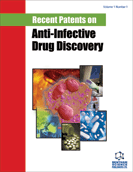Abstract
The main strategies nowadays to fight AIDS rely on chemical therapy to inhibit the reverse transcriptase or protease of HIV. However, a synthetic 36 amino-acids peptide that blocks the entry of the virus in the target cells (enfuvirtide) has recently reached approval for clinical application. This molecule may probably be just the leader of a new generation of drugs that is about to emerge to interrupt the first step in the HIV life cycle, i.e. preventing the virus from actually entering cells. This paper reviews the enfuvirtide path from clinical trials to the attempts to detail its molecular-level mode of action. It is commonly accepted that this peptide would block the fusion between viral and cell plasma membrane through binding to the N-terminal heptad repeat (NHR) region of the viral protein gp41. However, there has been growing evidence that this model of action may be unrealistic, the action of enfuvirtide being more complex and diverse than initially thought. Membrane-assisted local concentration increase and interference with gp120/co-receptor docking may also contribute for the inhibitory action of the peptide. Selected HIV-entry inhibitors on clinical trials are presented to characterize the future drugs in the market in this class.
Keywords: Entry, attachment, fusion, binding, entrance inhibitor, HIV, AIDS, virus, chemokine, peptide, receptor, co-receptor, synergism, clinical trial, enfuvirtide
 18
18





















